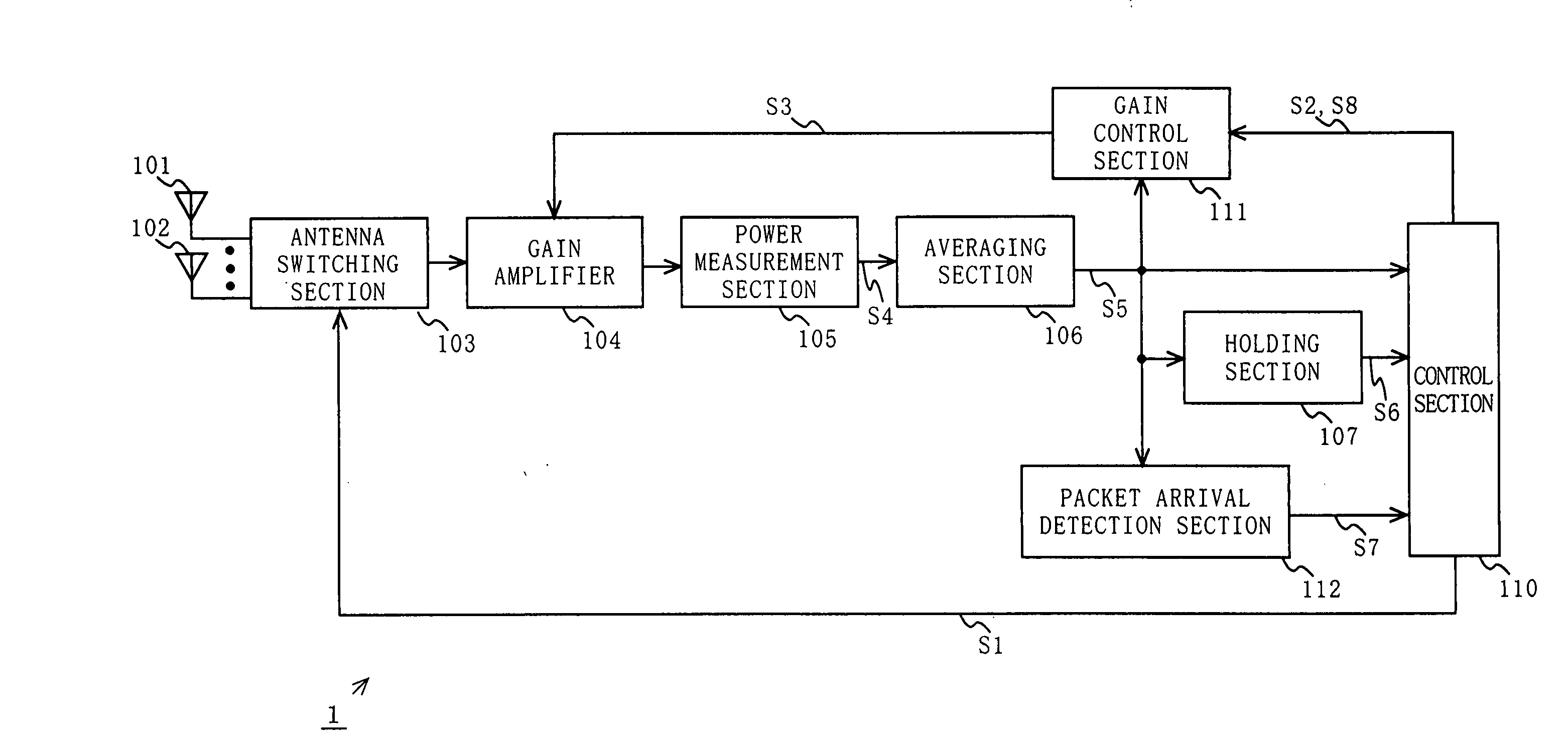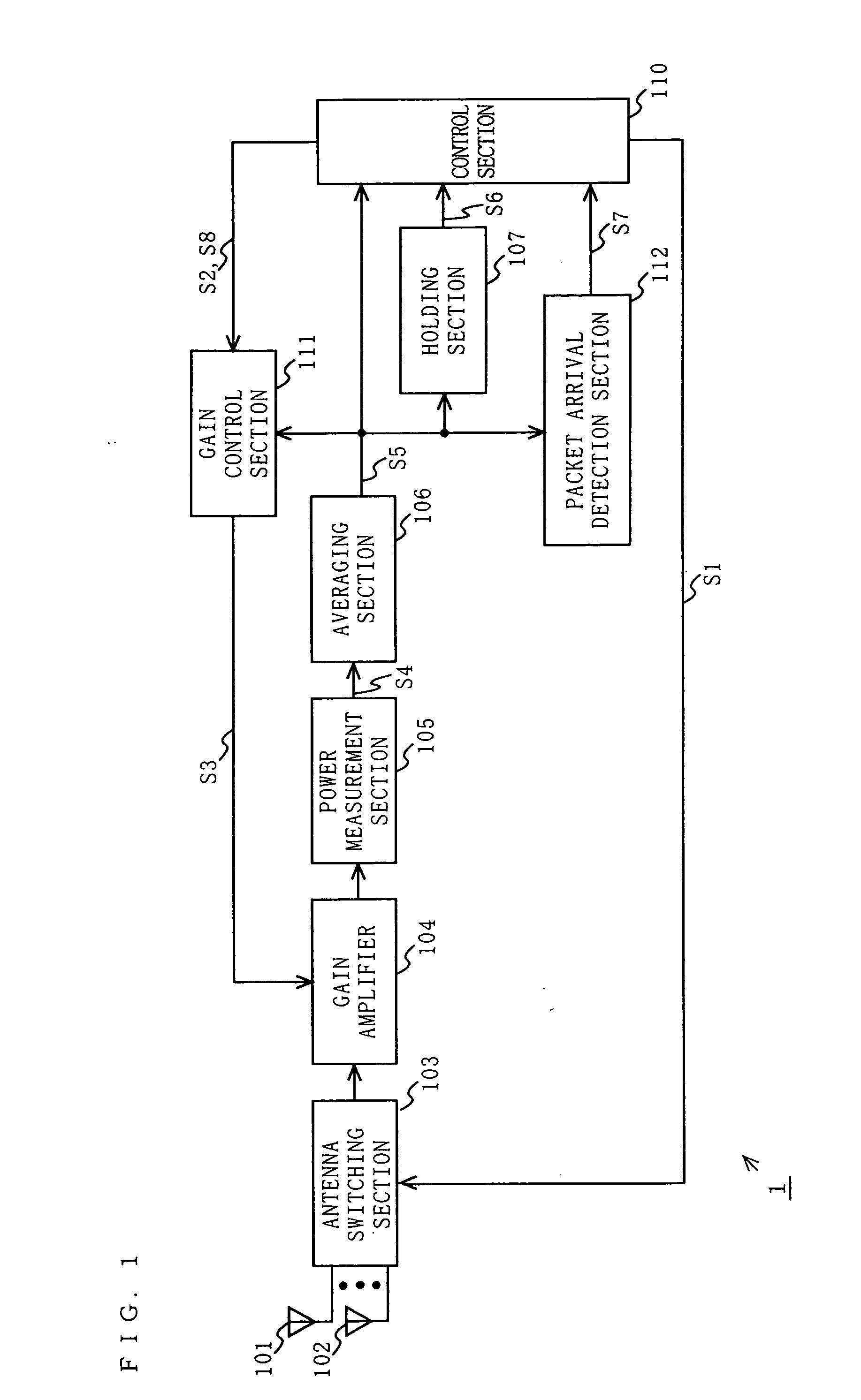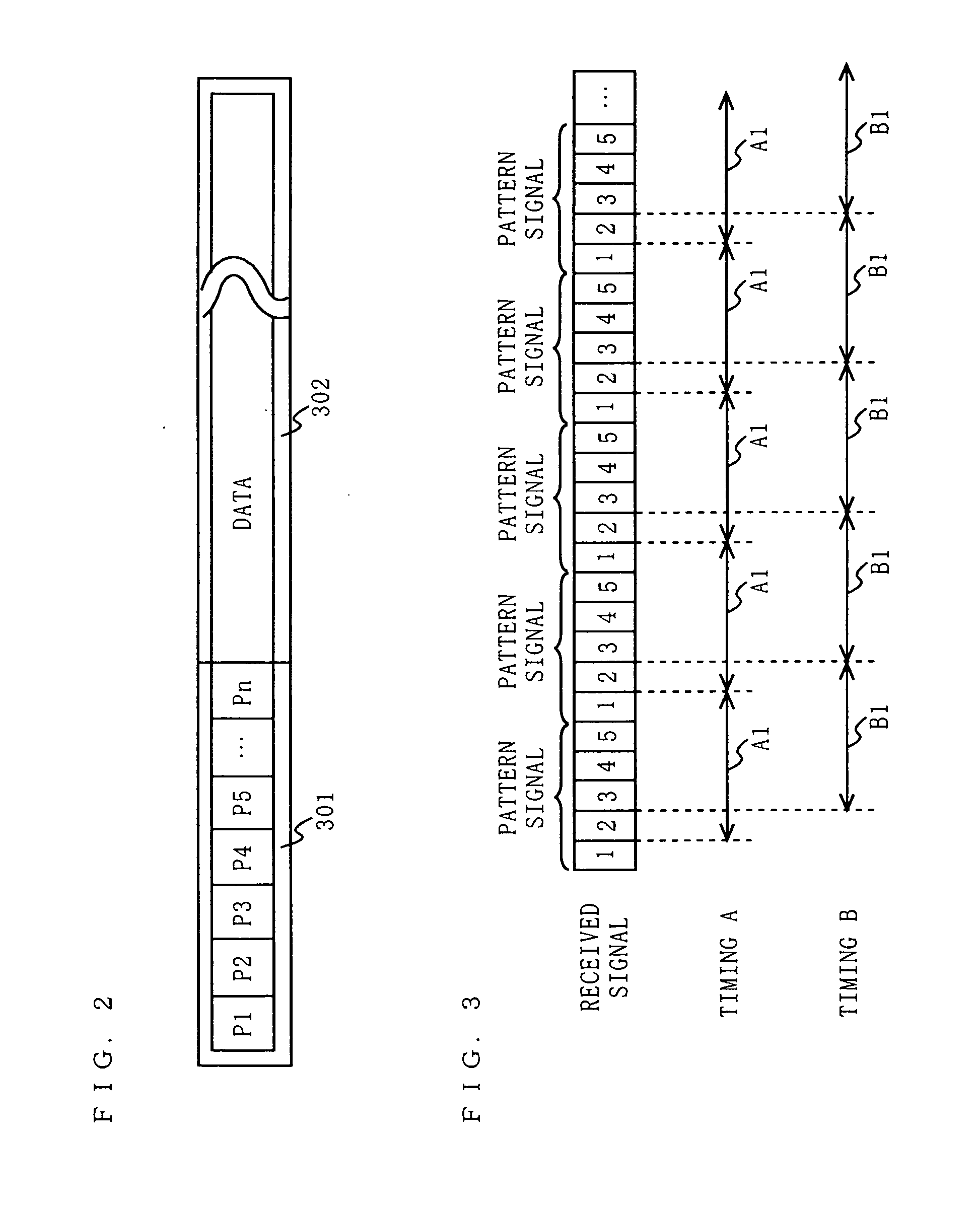Diversity receiving apparatus and wireless receiving apparatus using the same
a technology of receiving apparatus and receiving apparatus, which is applied in diversity/multi-antenna system, polarisation/directional diversity, transmission monitoring, etc., can solve the problems of inability to accurately determine the received power, the convergence of feedback loop requires more time, and the antenna requires a long time. , to achieve the effect of comparing the levels of average power, reducing the difficulty of comparing average power levels, and measuring the average power in a short tim
- Summary
- Abstract
- Description
- Claims
- Application Information
AI Technical Summary
Benefits of technology
Problems solved by technology
Method used
Image
Examples
first embodiment
[0032]FIG. 1 is a block diagram showing a functional configuration of a diversity receiving apparatus 1 according to a first embodiment of the present invention. In FIG. 1, the diversity receiving apparatus 1 includes a plurality of antennas (e.g., a first antenna 101 and a second antenna 102); an antenna switching section 103; a gain amplifier 104; a power measurement section 105; an averaging section 106; a holding section 107; a packet arrival detection section 112; a control section 110; and a gain control section 111.
[0033]FIG. 2 is a diagram showing a frame configuration of a packet to be received by the diversity receiving apparatus 1 according to the first embodiment. A packet includes a preamble section 301 and a data section 302. In the preamble section 301, a pattern signal having a pattern P of a predetermined waveform is repeated multiple times. In FIG. 2, for description purposes, a first arriving pattern signal is indicated as “P1” and a next arriving pattern signal ...
second embodiment
[0060] The block configuration of a diversity receiving apparatus according to a second embodiment of the present invention is the same as that of the first embodiment, and thus FIG. 1 is incorporated herein. In using the first embodiment, in the case where a received power is very high, if the gain amplifier 104 amplifies a received signal with the first fixed gain, the measured value may be saturated in the power measurement section 105 and accordingly an instantaneous power may not be determined accurately. In view of this, in the second embodiment, in the case where a received power is very high, the control section 110 switches the gain to a second fixed gain which is lower than the first fixed gain to adjust the measured value so that the measured value is not saturated in the power measurement section 105, and then determines average powers for each selected antenna.
[0061]FIG. 5 is a timing chart showing the correlation between signals at the main portion of a diversity rece...
third embodiment
[0073]FIG. 6 is a block diagram showing a functional configuration of a diversity receiving apparatus 3 according to a third embodiment of the present invention. In FIG. 6, elements having the same functions as those in the first embodiment are denoted by the same reference numerals and the description thereof will be omitted. In FIG. 6, the diversity receiving apparatus 3 includes a plurality of antennas (e.g., a first antenna 101 and a second antenna 102); an antenna switching section 103; a gain amplifier 104; a power measurement section 105; an averaging section 106; a holding section 107; a correlation section 108; a correlation detection section 109; a control section 110a; and a gain control section 111a.
[0074] In the case of using the first embodiment, if a received power is very low, even if the gain amplifier 104 amplifies a received signal with the first fixed gain, the received signal may be buried in the noise level and an instantaneous power may not be measured accura...
PUM
 Login to View More
Login to View More Abstract
Description
Claims
Application Information
 Login to View More
Login to View More - R&D
- Intellectual Property
- Life Sciences
- Materials
- Tech Scout
- Unparalleled Data Quality
- Higher Quality Content
- 60% Fewer Hallucinations
Browse by: Latest US Patents, China's latest patents, Technical Efficacy Thesaurus, Application Domain, Technology Topic, Popular Technical Reports.
© 2025 PatSnap. All rights reserved.Legal|Privacy policy|Modern Slavery Act Transparency Statement|Sitemap|About US| Contact US: help@patsnap.com



